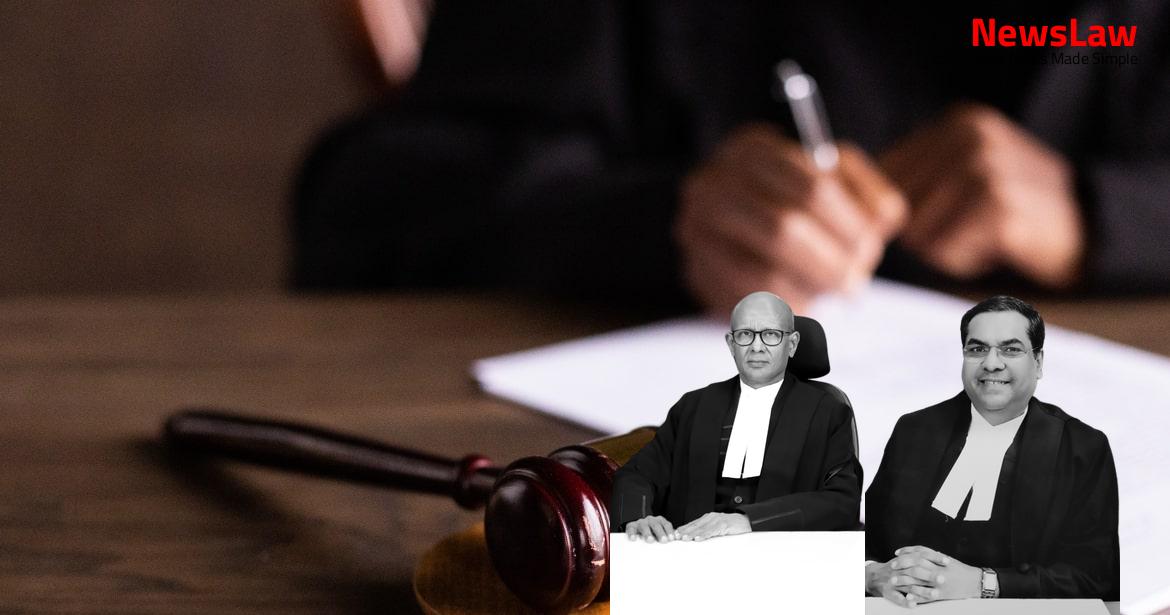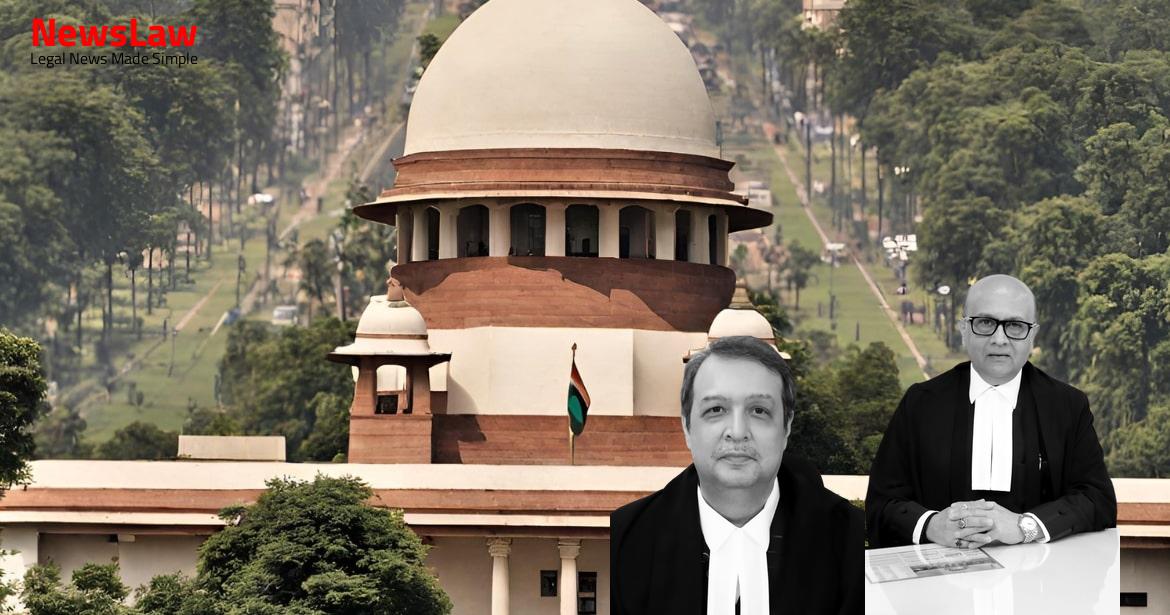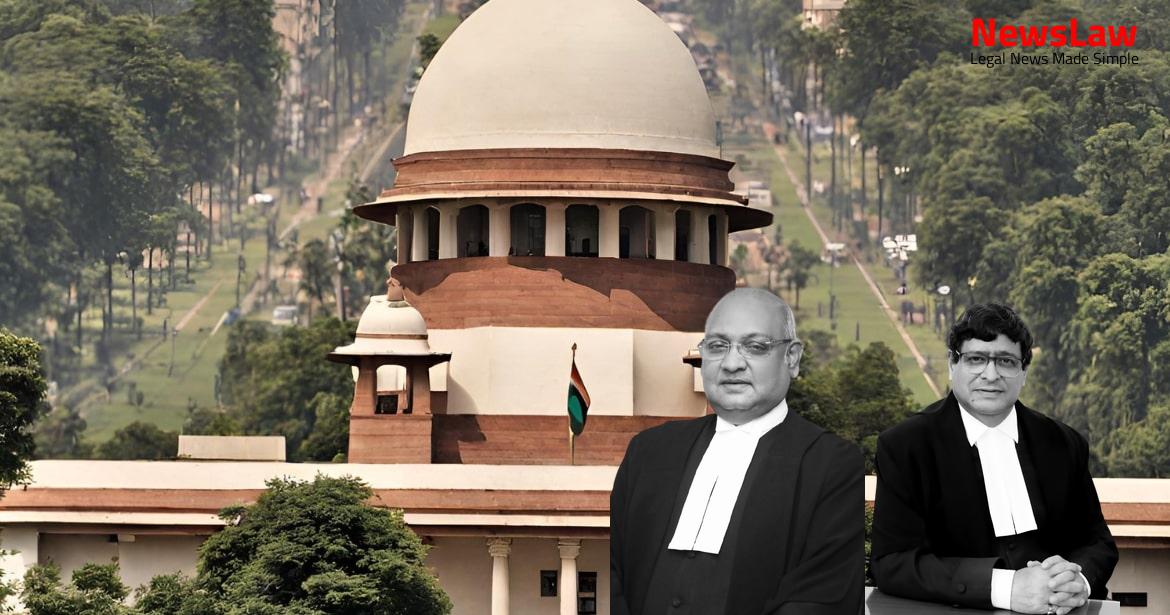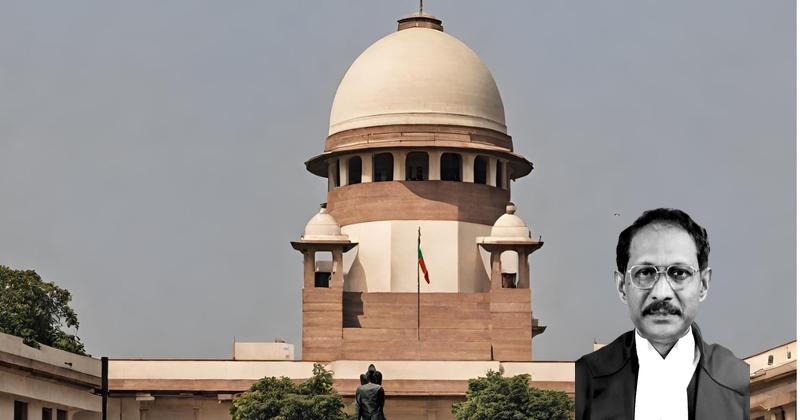In a significant ruling by the Supreme Court of India, a landmark judgement has been delivered in the case of The People vs. State of Madhya Pradesh. The decision centers around the use of circumstantial evidence in criminal cases, setting a precedent for future legal proceedings. This judgement is expected to have a lasting impact on the legal landscape of the country.
Facts
- On 13.11.2011, at 9.30 p.m., Rachna Bai heard a gunshot while she and Narayan Singh were sleeping at their house in Village Binjana, District Dewas, Madhya Pradesh.
- A pistol (Exhibit P-6) was recovered from the appellant, Santosh @ Rajesh @ Gopal.
- Chargesheet was filed against five individuals, including family members of the victim – Laadkunwar Bai, Jitendra Singh, and Meharban Singh, as well as Santosh @ Rajesh @ Gopal and Nirbhay Singh @ Rajesh Mama.
- Evidence includes the recovery of a pistol (Exhibit P-6) and a ballistic report (Exhibit P-57) confirming the bullet from the victim was fired from the country-made pistol.
- Narayan Singh was called outside after someone called his name, following which he was shot in the chest.
- Santosh @ Rajesh @ Gopal’s conviction was upheld in the case, while Nirbhay Singh @ Rajesh Mama’s appeal was dismissed post his demise.
- Laadkunwar Bai and Meharban Singh were acquitted by the trial court on 30.11.2017.
- Nirbhay Singh @ Rajesh Mama, Jitendra Singh, and the appellant filed appeals before the High Court of Madhya Pradesh at Indore.
- Jitendra Singh has been acquitted by the High Court on 18.10.2022.
- The appeals were in relation to the trial court’s acquittal of Laadkunwar Bai and Meharban Singh.
Also Read: Modification of Order: Enforcement Directorate v. Amit Walia
Analysis
- The ballistic report connects the pistol recovered from the appellant with the bullet recovered from the victim, which is an inculpatory fact.
- The discovery and recovery of the pistol are attributed to a disclosure statement provided by the deceased co-accused, Nirbhay Singh, governed by Sections 8 and 27 of the Indian Evidence Act, 1872.
- Conditions required to be satisfied under Section 27 from the case law Perumal Raja v. State, Represented By Inspector of Police, which refers to Mohmed Inayatullah v. State of Maharashtra.
- No eyewitnesses to the crime implicating the appellant.
- Facts proved by the prosecution give rise to two alternative hypotheses which need to be analyzed by the court.
- Absence of any corroborative evidence directly linking the appellant to the crime introduces a significant gap in the chain of circumstances.
- The case against the appellant rests entirely on circumstantial evidence.
- The prosecution may take benefit of Section 8 of the Indian Evidence Act, 1872, only in relation to the discovery of a physical object.
- In the case of State of Maharashtra v. Suresh, three hypotheses emerge when incriminating material is discovered based on a disclosure statement.
- The prosecution’s case in this instance is that the location of the pistol was disclosed by the co-accused, Nirbhay Singh.
- To establish the appellant’s participation in the murder, further material and evidence linking the appellant to the actual crime are required.
- The prosecution failed to prove the appellant’s guilt of murder on 13.11.2011.
- A complete chain of evidence, excluding all hypotheses but the one proposed to be proved, must be present in cases based on circumstantial evidence.
- The ‘golden rules’ outlined in Sharad Birdhichand Sharda v. State of Maharashtra must be satisfied for circumstantial evidence to conclusively establish the guilt of the accused.
- Evidence obtained from a person accused of an offense can be admissible if it leads to the discovery of a fact related to the offense.
- The information must distinctly lead to the discovery of a fact in consequence of the information received.
- The distinctly relevant part of the statement can be used as evidence against the accused.
- This rule applies when the fact discovered directly relates to the information provided by the accused.
- Failure to establish a hypothesis of guilt conclusively excluding all other reasonable possibilities
- Lack of conclusive evidence pointing solely to one specific conclusion
- Inadequacy in proving guilt without a doubt beyond reasonable possibilities
Decision
- Appellant Santosh @ Rajesh @ Gopal’s conviction has been set aside.
- The appeal has been allowed by the court.
- The bail bonds and sureties provided by the appellant are cancelled.
- All pending applications have been disposed of.
Also Read: Case Summary: Disputed Share Acquisition Involving Dr. Suresh Anne
Case Title: SANTOSH @ RAJESH @ GOPAL Vs. THE STATE OF MADHYA PRADESH (2024 INSC 723)
Case Number: Crl.A. No.-002030-002030 – 2024



